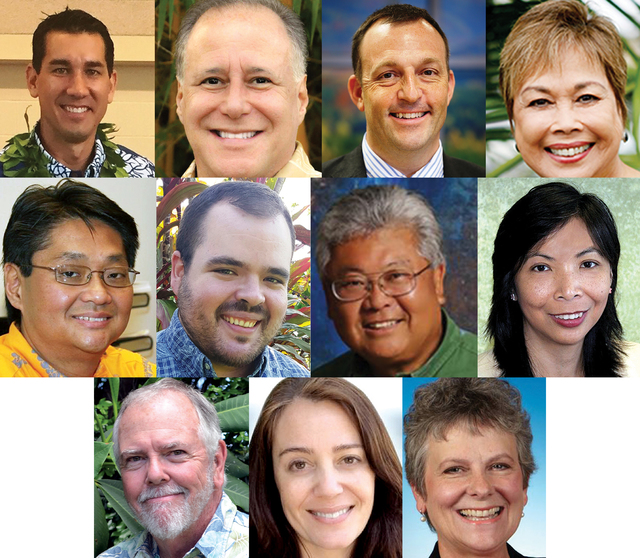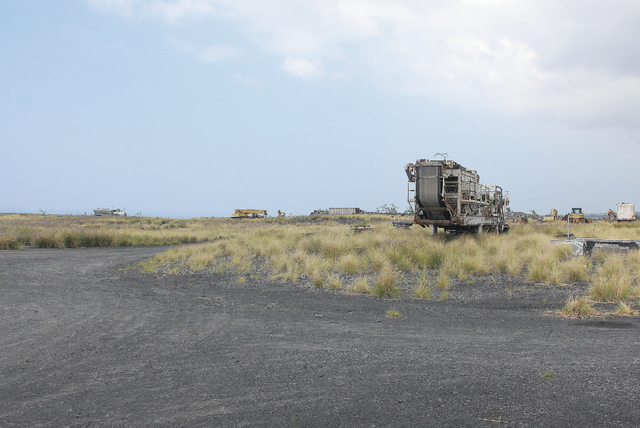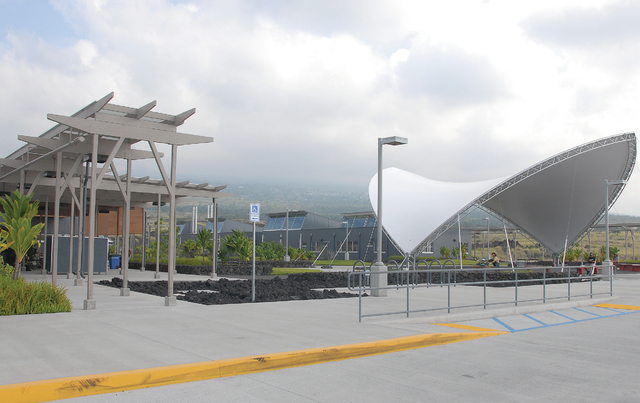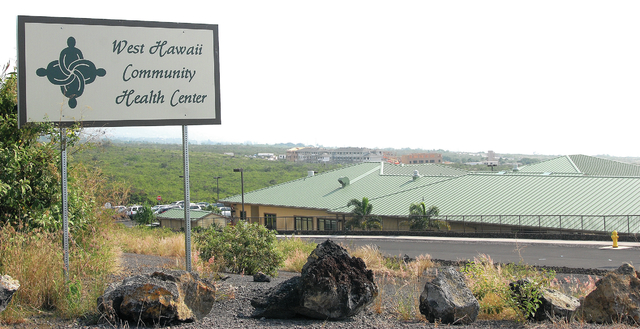Here’s what Big Island lawmakers are fighting for this legislative session
HILO — It’s that time of year again, and Big Island legislators are brimming with new ideas for laws and projects they want to see in their districts.
The Legislature convenes at 10 a.m. Wednesday for its 60-day session. The 29th Biennial Hawaii State Legislature begins with swearing-in of members and a largely ceremonial session, with opening day speeches from legislative leaders.
In addition to taking up Gov. David Ige’s proposed $28.5 billion budget, lawmakers plan to propose a $15 an hour minimum wage, new death with dignity legislation, an airport authority and ways to fund roads.
Hawaii counties are seeking a greater share of the transient accommodations tax, also known as hotel tax, and legal immunity for county lifeguards as their top choices outlined by the Hawaii State Association of Counties.
Closer to home, projects such as a new West Hawaii teaching hospital, juvenile assessment center, Puna agriculture park, Banyan Drive revitalization and extensions of both ends of Saddle Road will also focus local lawmakers’ attention.
Here are the 11 members of the Big Island legislative delegation and their top priorities:
Senate
District 1
Sen. Kai Kahele, a Democrat representing Hilo, is chairman of the Senate Higher Education Committee. That puts him in a good position to work on his top priority of making college tuition more affordable for Hawaii residents.
Kahele plans to introduce a measure dubbed “Hawaii Promise,” similar to a scholarship program in Tennessee that covers the balance of a qualified student’s college costs remaining after Pell Grants and other more traditional sources of financial aid.
Costs for college, including room and board, have escalated to more than $12,000 annually in Hawaii, Kahele said.
“In some cases, it’s completely out of reach,” he said. “If you have the determination and desire to get a college degree, I want to make that happen for you.”
Another Kahele priority is finishing the east-side extension of Saddle Road by taking Puainako Street all the way to Kanoelehua Avenue. Puainako Street is a state road and should be the state’s responsibility, he said. In addition, the heavy military use of the road for convoys from Pohakuloa Training Area to Keaukaha Military Reservation should qualify for federal funding.
Ige’s proposed biennial budget asks for $85 million for a new extension of the highway on the west side of the island between Mamalahoa Highway and Queen Kaahumanu Highway.
But the Department of Transportation sees the east end of the highway as complete, Kahele said. He said he’s getting complaints from residents where the unfinished road dumps into neighborhoods.
“It’s a project that’s long overdue,” he said.
District 2
Sen. Russell Ruderman, a Democrat representing Puna and Ka‘u, envisions a new agriculture park in Puna, which he sees as a way to increase sustainability and food security and provide needed employment to people living in the area.
The park, which he says could be located on hundreds of acres of state land between Hawaiian Beaches and Hawaiian Shores, has access to ample water, including a freshwater aquifer and easy access to cold ocean water that could be used for chilling produce and growing winter crops. There’s also good soil, he said.
“This area of lower Puna has resources that nowhere else in the state has,” he said. “It’s a large, long-term project that could benefit Puna for decades if we can get it going.”
Ruderman, owner of a chain of natural food stores, also says it’s time to fight the premise that increasing the minimum wage will hurt small businesses. In a sound economy, he said, paying people more will cause them to buy more things, resulting in more profits for businesses.
“It’s a burden on society that we’re afraid to put on the private sector where it belongs,” he said.
The state as of Jan. 1 raised the minimum wage to $9.25 a hour, but Ruderman believes it should be higher. He pays his own employees at least $10, and many make more than that, he said.
While there are several minimum wage bills already in the works, Ruderman plans to introduce his own, which will have two major differences — it would allow counties to have the option to set higher minimum wages than the state, and it would allow employers to pay a percentage less than the minimum to hire those under 18, who may not have the experience and might need more training.
Bill sponsors believe raising the minimum wage in a graduated process, first to $15 an hour and eventually to $22 an hour, would help people be able to afford housing and other necessities.
“Someone who works full time deserves to live,” Ruderman said. “How do we as a state tackle the high gap between our average wage and the cost of living?”
Ruderman is also looking into legislation to make fireworks laws enforceable.
District 3
Tackling the interrelated social problems of addiction, homelessness and a shortage of mental health care are among the priorities for Sen. Josh Green, a Democrat representing Kona and Ka‘u, and a physician.
“Right now, we’re just managing the problems,” Green said. “I have submitted a package of bills to address this complex problem, including more funding for permanent housing and drug and mental health treatment on the Big Island.”
Green feels he’s in the perfect position, as chairman of the Committee on Human Services, to bring the many components together to help address the myriad social problems by spending money more wisely.
He’s looking for a way to restructure financing to provide more services with the more than $1.5 billion the state already spends on Medicaid, which pays for medical services for residents in poverty or with disabilities.
By allowing Medicaid money to also provide basic shelter, it could end some of the expensive crisis medicine — for ambulances and emergency rooms, for example — and use the funding more efficiently. It could reduce the incidence of lost medications and chronic staph infections and respiratory problem for people living in the street, he said.
A full 60 percent of Medicaid funding in the state is used by just 3.6 percent of the Medicaid population, he said.
“Local funding priorities will be for our health care and housing safety net in West Hawaii, including funds for the West Hawaii Community Health Center and a water source to allow for affordable housing in the Lai Opua area,” he said.
District 4
Sen. Lorraine Inouye, a Democrat whose district stretches across the north half of the island from Hilo to Kona, is chairwoman of the Senate Transportation and Energy Committee.
Tops on Inouye’s priority list is the creation of an airport authority or airport corporation to take over upgrading and operating the 15 state airports, which are currently managed by the state Department of Transportation. Hawaii is one of only three states — the others are Alaska and Maryland — that don’t have a separate authority to run airports.
“I think it’s in their best interest and there’s a lot of support in the community,” Inouye said.
The state last year conducted a study on how best to set up such an authority. With the major airlines and DOT behind it, Inouye envisions an authority that can streamline the modernization process because vendors wouldn’t be bound by state procurement laws.
“We’ve had all sorts of complaints,” Inouye said about the conditions at airports.
Another priority is death with dignity, or what Inouye is calling “aid in dying” legislation. Inouye points to a November 2016 poll of 603 registered voters that showed 80 percent supported the legal right of a mentally capable adult with an incurable terminal disease to request medication to end their lives.
“It’s certainly about time,” Inouye said.
The telephone and internet survey was conducted by Anthology Research for Compassion &Choices Hawaii, which supports death with dignity. It had a 3.99 percent margin of error at the 95 percent level of confidence.
House of Representatives
District 1
Rep. Mark Nakashima, a Democrat representing Hamakua and Hilo, chairs the Committee on Economic Development and Business.
Nakashima is looking to update the Hawaii State Plan, which hasn’t been revised since 1986. The long-range plan sets policy goals, guides future development and helps state agencies coordinate their activities toward a common goal.
“It still states that pineapple and sugar are our chief agricultural products,” Nakashima said. “That needs to be updated so as a state we have a clear vision about our priorities and the direction we should go.”
As a project priority, Nakashima is looking to update Hilo Medical Center with technology to allow patients to talk with off-island specialists. The telemedicine technology, which will cost about $2 million, will bring faster patient care and save money, he said.
“People will be able to talk with a specialist right here without getting on a plane and going to Honolulu,” he said.
The recent renovations of the hospital have opened up space for the new service, he said.
District 2
Rep. Chris Todd, a Democrat representing Hilo, has just stepped into office after being named Jan. 5 to replace the late Rep. Clift Tsuji. Todd plans to do a lot of listening and learning during his first session.
“Being that I’m new, I will first find key projects that were important to Rep. Tsuji and do my best to see them through,” he said. “I want to do my best to support our delegation and learn from them before influencing the conversation.”
In particular, Todd plans to look for ways to support the University of Hawaii at Hilo, Hawaii Community College and local schools.
District 3
Rep. Richard Onishi, a Democrat representing Hilo, Keaau, Kurtistown and Volcano, is chairman of the House Tourism Committee.
“In determining my legislative priorities this year, I have taken into consideration what I believe would be beneficial to increase our state’s interest in our tourism industry and to further the state’s goal to increase our agricultural food sustainability,” Onishi said.
One of his top priorities is legislation to revitalize and redevelop Banyan Drive.
“This legislation will provide for economic development for Hawaii Island by generating new jobs, creating business opportunities and creating a second international destination for the island of Hawaii which has just begun accepting international flights into the Kona airport,” he said. “The vision for this legislation will be to allow the need for the redevelopment of this deteriorating area to co-exist compatibly with future public uses for the area.”
Agriculture is another top Onishi priority. He’s working on legislation to exempt qualified farmers from taxes in order to encourage more diversified agriculture and increase self-sufficiency.
“This exclusion is just a small way to give positive reinforcement to any farmer who produces farm products sold within the state,” Onishi said.
District 4
Rep. Joy San Buenaventura is a Democrat representing Puna.
“My priority is to work with Transportation Chair Sen. Inouye and ensure that four-lane-project Highway 130 doesn’t get moved down in priority again and that the alternate road that was funded in the 2015 session gets built,” she said.
The four-lane project was changed from a widening project to a re-striping project after the Legislature last year voted down funding options such as hikes in gas taxes and vehicle registration fees.
San Buenaventura, an attorney and vice chairwoman of the House Judiciary Committee, is also turning her sights on the state’s new medical marijuana dispensary law in order to smooth out the obstacles slowing down the construction and startups of the dispensaries.
She wants to push for marijuana legalization, too.
And, she wants to create legislation for an alternative way to resolve homeowner association disputes without having to take them through the court system.
District 5
Rep. Richard Creagan, a Democrat representing a sprawling district from Naalehu to Holualoa, is a physician and a farmer.
His top priority for a Big Island project is a new university teaching hospital that could be located on state land across from the airport near Palamanui. The Legislature last year appropriated $500,000 for a feasibility study that’s being handled by the John A. Burns School of Medicine on Oahu.
A teaching hospital would attract young medical workers who might decide to stay in the area after training. It will also bring in specialists who will not only teach classes, but will practice medicine, bringing much-needed specialists to the island, he said.
“It raises the level of care a couple of notches,” he said.
Creagan envisions the hospital as training a panel of primary care specialties including family practice, pediatrics, internal medicine, psychiatry and possibly obstetrics/gynecology and general surgery.
Creagan, who was recently named chairman of the House Agriculture Committee, also wants to encourage more food production and help combat development of prime agriculture land by loosening some of the regulations surrounding lands classified as agriculture.
“My goal is to expand agriculture and to support the rural lifestyle by permitting more liberal use of agriculture lands for such uses as housing, campgrounds, farmer’s markets and agritourism,” he said. “Farms would not be subdivided, but more housing would be permitted for rental housing, workforce housing, housing for the elderly, agritourism rentals. The presence of more housing would enhance productivity and income while also providing for better farm security and alleviate the problems of agricultural theft and vandalism.”
District 6
Rep. Nicole Lowen, a Democrat representing Kailua-Kona, Holualoa, Kalaoa and Honokohau, is the Big Island’s only representative on the House Finance Committee.
Two projects already in the works — a federal inspection station at Kona International Airport and the next phase of the Hawaii Community College — Palamanui campus — need to be watched to ensure they stay on track, she said.
Ige recommitted to his vision to see Kona International Airport become the state’s second major Japan-Hawaii hub, adding $50 million in his proposed budget to complete a permanent federal inspection station to allow more direct commercial flights between Kailua-Kona and Japan. Lowen is determined to see that money stay in the Legislature’s appropriation bill.
The second phase for the community college also needs to stay on track, Lowen said. It finished its first phase in 2015 and is already ready for expansion.
“We’ve already met our enrollment goals for the current campus,” she said. “We want to keep expanding opportunities for West Hawaii for all the students here.”
As vice chairwoman of the Energy and Environmental Protection Committee, Lowen is also monitoring invasive species issues and energy alternatives.
District 7
Rep. Cindy Evans is a Democrat representing North Kona and North and South Kohala. As House Majority floor leader, Evans must stay apprised of bills on all topics flowing through the system, and her priorities are varied as well.
Tops on the list, however, are programs controlling invasive species. Hawaii Island has been pummeled with everything from the rapid ohia death fungus to little fire ants to coffee berry borer beetle and even coqui frogs.
“Invasive species is a real big, big deal,” Evans said.
She wants to see an invasive species authority that would pull from various agencies to create a unified plan to prevent invasive species from entering the state and dealing with them once they show up.
“We’d reach across all agencies with one voice,” she said.
A local funding priority for Evans is the creation of a juvenile assessment center on the west side of the island, similar to one in Hilo.
The purpose of the program is to provide immediate intake and assessment for youth picked up by police, using a behavioral assessment instrument. Based on this assessment, youth and their families are referred to services and resources in the community, allowing police officers to return to patrol duties, according to the program’s website.






